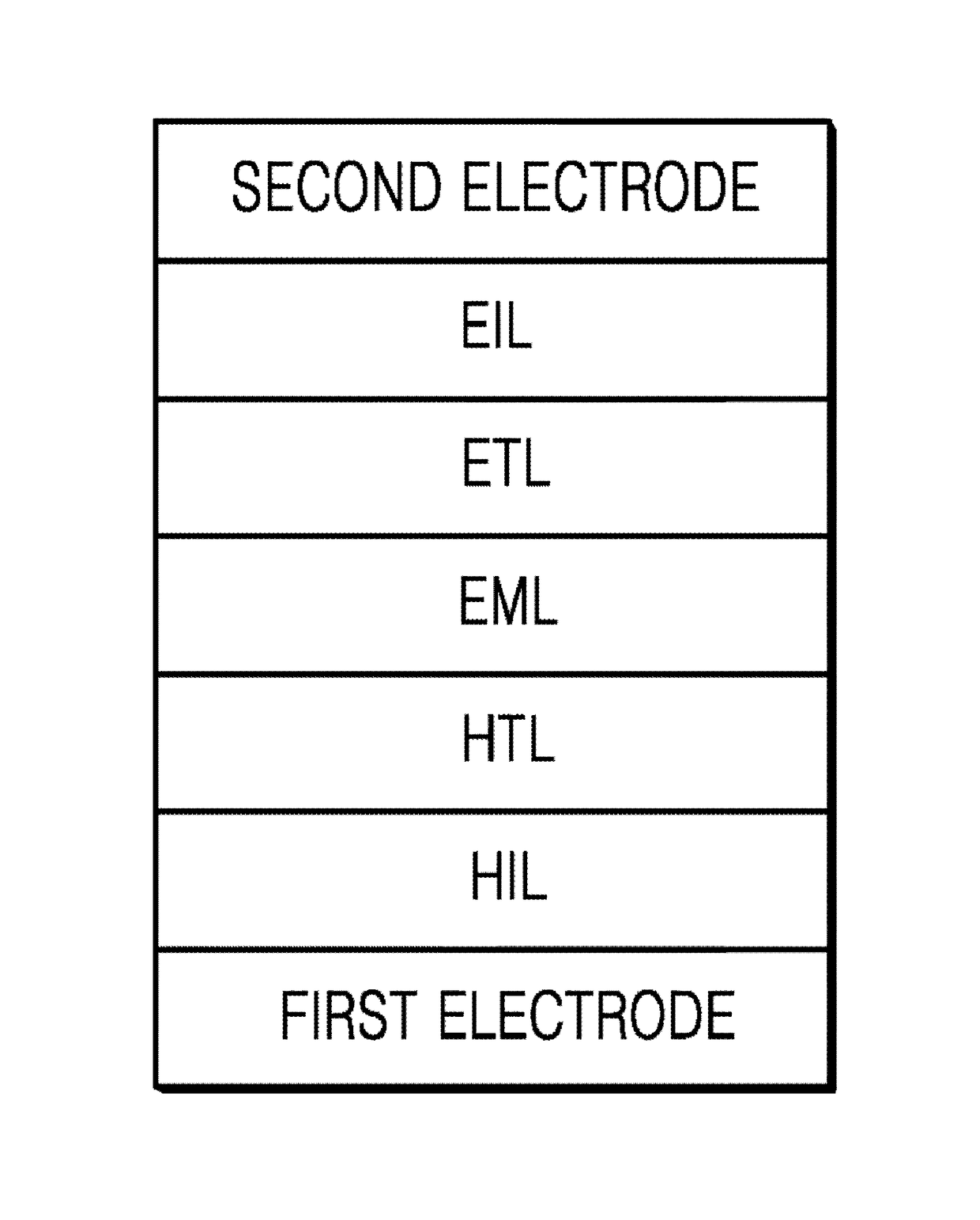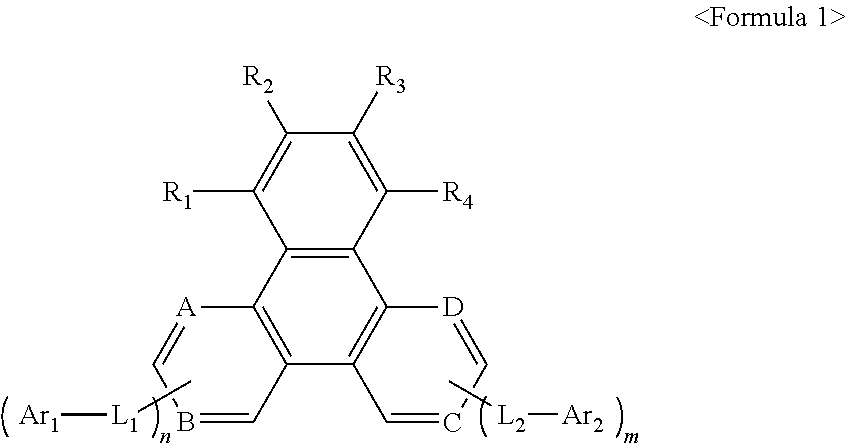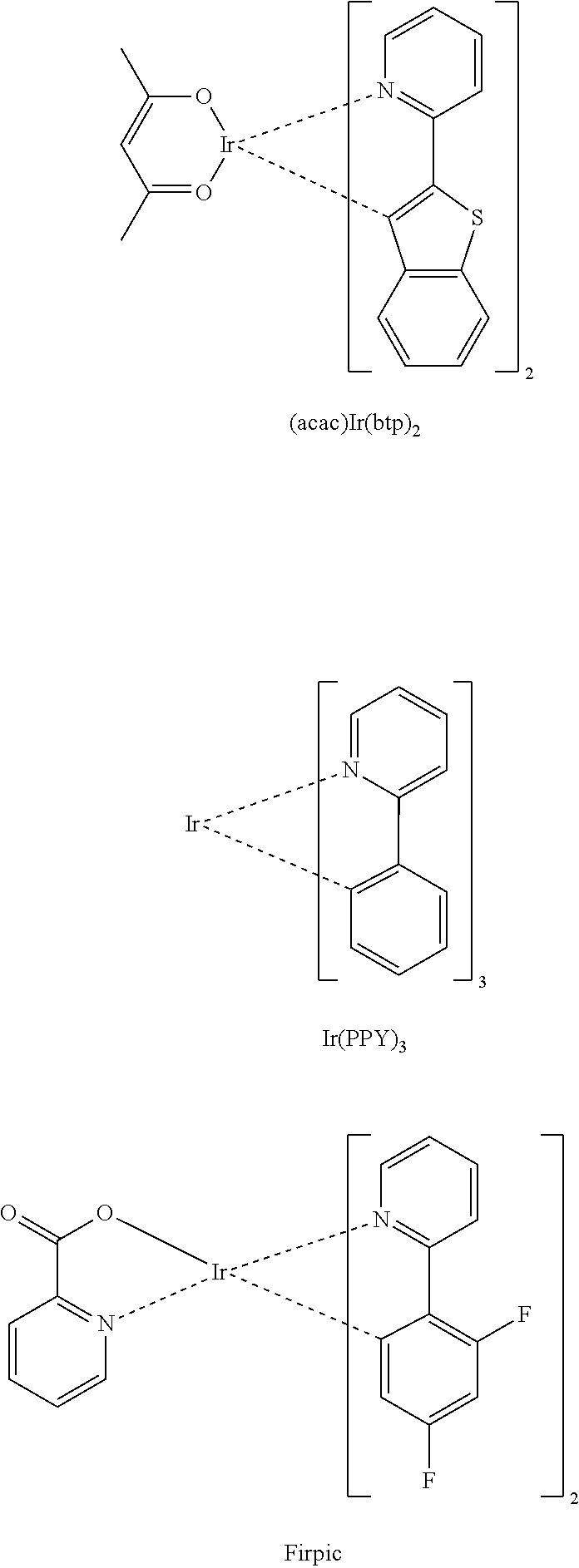Heterocyclic compound and organic light-emitting device including the same
a technology of organic light-emitting devices and heterocyclic compounds, which is applied in the direction of solid-state devices, organic chemistry, chemistry apparatuses and processes, etc., can solve the problems of poor thermal stability, low glass transition temperature, and poor lifetime of oleds using such a host material from the existing art, so as to improve luminescent efficiency and long lifetime, and achieve high power efficiency.
- Summary
- Abstract
- Description
- Claims
- Application Information
AI Technical Summary
Benefits of technology
Problems solved by technology
Method used
Image
Examples
synthesis example 1
[0155]
[0156]Synthesis of Compound 1
[0157]A quantity of 10 g (1 eq, 0.044 mol) of Intermediate A, and 14.06 g (1.1 eq, 0.049 mol) 4-(9H-carbazol-9-yl)phenylboronic acid were dissolved with 700 ml of toluene in a flask. A quantity of 0.92 g (0.02 eq, 0.0008 mmol) of Pd(PPh3)4 and 30 mL of a 2M K2CO3 solution were added into the solution, then heated while stirring for about 12 hours. When reaction was complete, the reaction solution was filtered through Celite, and a filtered product was refined by column chromatography to obtain 14.7 g of Compound 1 with a yield of about 84.2%.
[0158]Elemental Analysis for C34H21N3: calcd C, 86.60; H, 4.49; N, 8.91.
[0159]HRMS for C34H21N3 [M]+: calcd 471, found 471.
synthesis example 2
[0160]
[0161]Synthesis of Compound 4
[0162]A quantity of 14.1 g of Compound 4 was synthesized with a yield of about 83.7% in the same manner as in Synthesis Example 1, except that 3-(9H-carbazol-9-yl)phenylboronic acid, instead of 4-(9H-carbazol-9-yl)phenylboronic acid, was used.
[0163]Elemental Analysis for C34H21N3: calcd C, 86.60; H, 4.49; N, 8.91.
[0164]HRMS for C34H21N3 [M]+: calcd 471, found 471.
synthesis example 3
[0165]
[0166]Synthesis of Compound 6
[0167]A quantity of 16.4 g of Compound 6 was synthesized with a yield of about 86.4% in the same manner as in Synthesis Example 1, except that 3-(5-phenyl-5H-pyrido[3,2-b]indol-8-yl)phenylboronic acid, instead of 4-(9H-carbazol-9-yl)phenylboronic acid, was used.
[0168]Elemental Analysis for C39H24N4: calcd C, 85.38; H, 4.41; N, 10.21.
[0169]HRMS for C39H24N4 [M]+: calcd 584, found 584.
PUM
| Property | Measurement | Unit |
|---|---|---|
| pressure | aaaaa | aaaaa |
| temperature | aaaaa | aaaaa |
| temperature | aaaaa | aaaaa |
Abstract
Description
Claims
Application Information
 Login to View More
Login to View More - R&D
- Intellectual Property
- Life Sciences
- Materials
- Tech Scout
- Unparalleled Data Quality
- Higher Quality Content
- 60% Fewer Hallucinations
Browse by: Latest US Patents, China's latest patents, Technical Efficacy Thesaurus, Application Domain, Technology Topic, Popular Technical Reports.
© 2025 PatSnap. All rights reserved.Legal|Privacy policy|Modern Slavery Act Transparency Statement|Sitemap|About US| Contact US: help@patsnap.com



